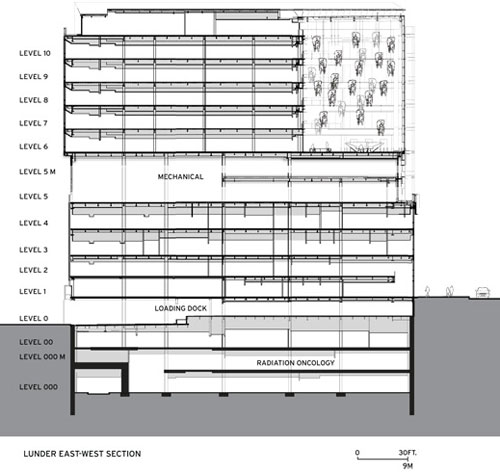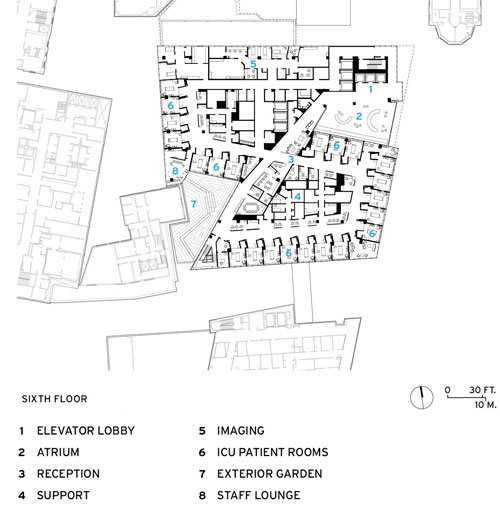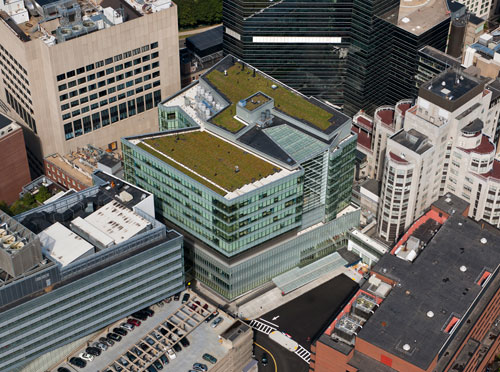Nature Nurtures
The overarching goal of this analysis is to promote widespread adoption of biophilia in buildings of all types. And there is an indication that health-care providers and the architects who work with them are more receptive than ever to biophilic strategies. Robin Guenther, a Perkins+Will principal, credits this new traction to developments over the past decade like the increased importance of sustainability and the emergence of evidence-based design (a multidisciplinary process that relies on credible research as the basis for design decisions). Hospitals are no longer seen simply as “repositories of machinery,” says Guenther who, with Gail Vittori, was editor of the 2008 book, Sustainable Healthcare Architecture.
 |
 |
Examples of biophilic design tactics include the incorporation of water features, healing gardens, daylight, and views out to nature, as well as the use of natural materials or biomorphic architectural forms. Often such features are discrete elements in a building, but sometimes they serve as a fundamental organizing principle. Such was the case at two health-care facilities in very different settings on opposite coasts: Massachusetts General Hospital’s 535,000-square-foot Lunder Building, completed last year on the institution’s densely developed campus in Boston, and the 736,000-square-foot Palomar Medical Center West, set to open later this month in northern San Diego County. The glass-clad Lunder has two wedges sliced from opposite sides of its 10-story cubelike volume: One void houses an outdoor bamboo garden, and the other is an 80-foot-tall atrium containing hanging vines. The more suburban Palomar’s signature feature is a 1.5-acre, subtly undulating green roof. It covers a two-story diagnosis-and-treatment wing that is an extension of the base of an 11-story patient tower. The roof is visible from many of the facility’s 360 rooms.
 |
Lunder's bamboo garden occupies one of two notchlike voids in the building’s 10-story glass-clad volume. The other void is a skylit atrium containing hanging vines. Lunder has a green roof that is not accessible but is visible from adjacent towers. Photo © Anton Grassl |









